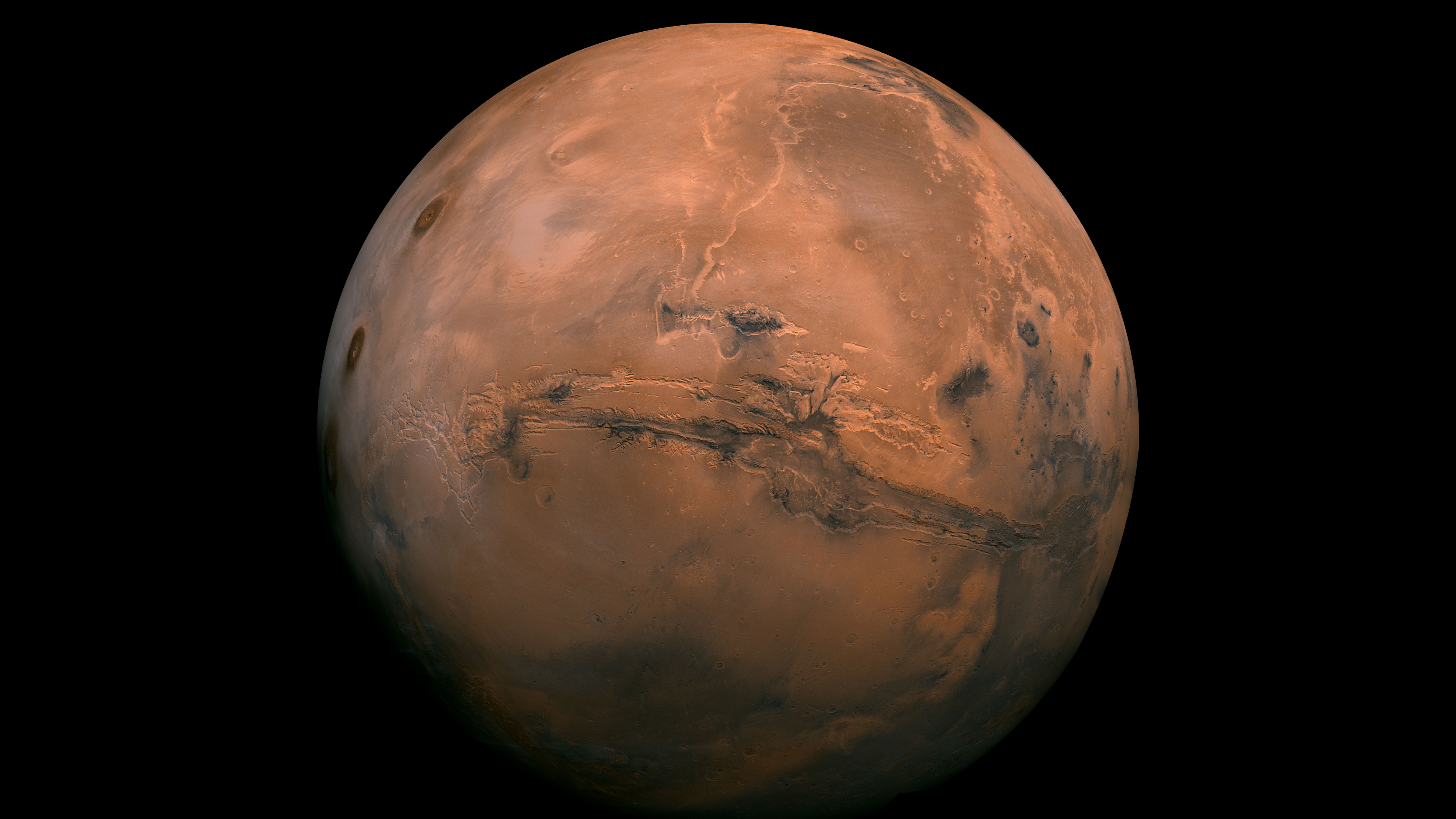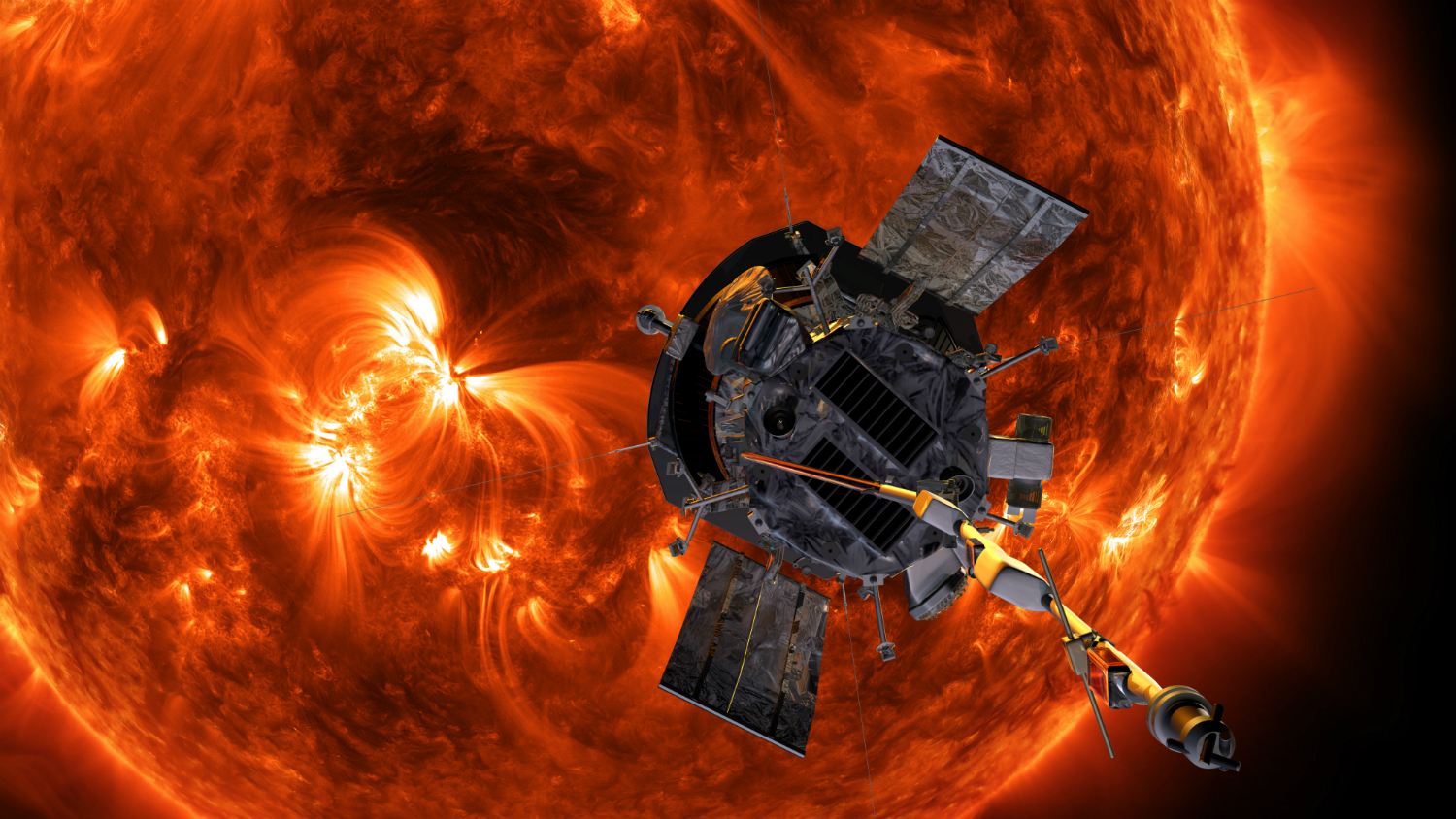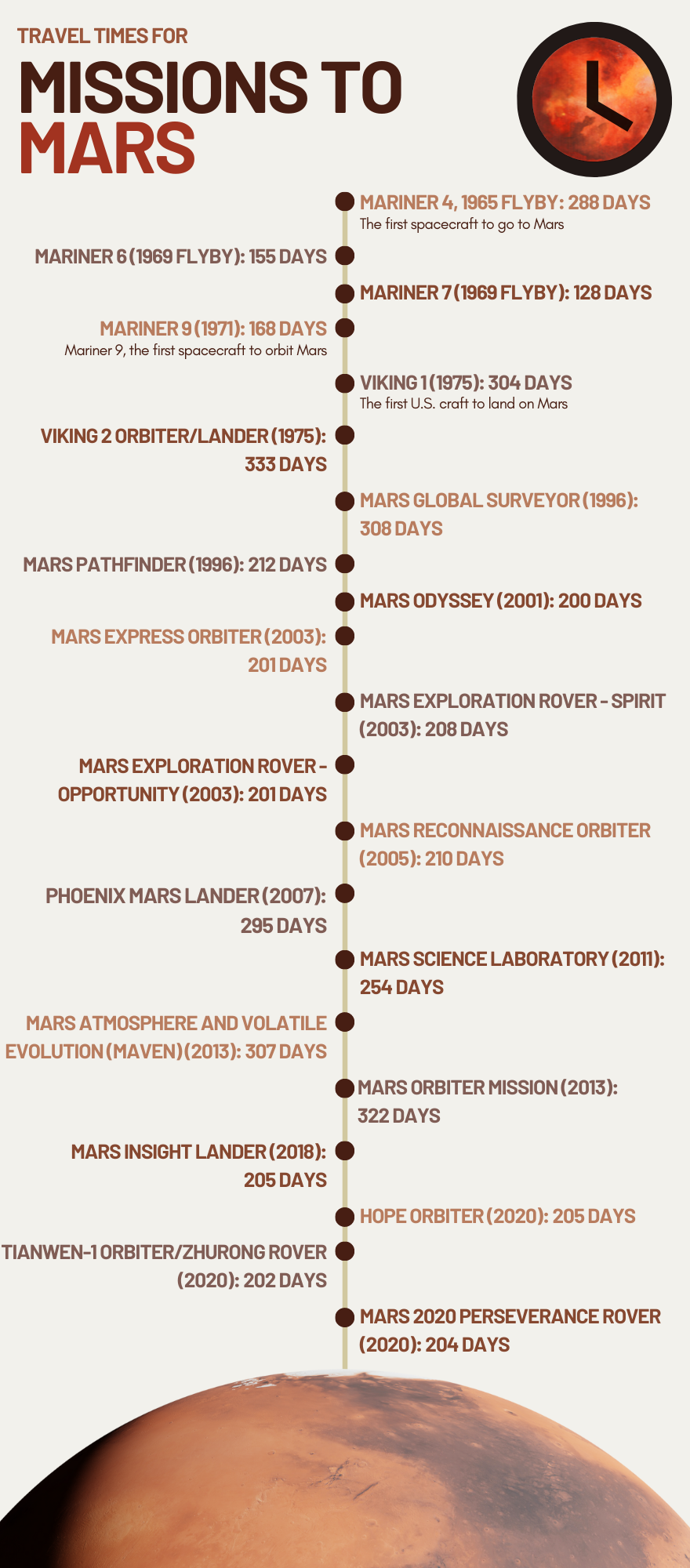How Long Does It Take Mars To Rotate
How long does information technology take to go to Mars?

If you wanted to travel to Mars, how long would it take? The answer depends on several factors, ranging from the position of the planets to the applied science that would propel you lot at that place.
According to NASA (opens in new tab), a 1-way trip to Mars would take about nine months. If you lot wanted to arrive a round-trip, all in all, information technology would take about 21 months as you will need to wait about 3 months on Mars to brand sure Earth and Mars are in a suitable location to make the trip back home.
We take a look at how long a trip to the Red Planet would take using available technology and explore some of the factors that would affect your travel fourth dimension.
How far abroad is Mars?
To decide how long it will have to reach Mars, we must kickoff know the distance betwixt the two planets.
Mars is the 4th planet from the sun, and the second closest to Globe (Venus is the closest). Simply the distance between Globe and Mars is constantly changing as they travel around the sun.
In theory, the closest that Earth and Mars would approach each other would exist when Mars is at its closest point to the dominicus (perihelion) and Globe is at its farthest (aphelion). This would put the planets merely 33.9 million miles (54.6 million kilometers) apart. Withal, this has never happened in recorded history. The closest recorded approach of the two planets occurred in 2003 when they were but 34.8 million miles (56 million km) apart.
The two planets are farthest apart when they are both at their farthest from the sunday, on opposite sides of the star. At this point, they can be 250 million miles (401 meg km) autonomously.
The average altitude betwixt Earth and Mars is 140 million miles (225 million km).
Related: What is the temperature on Mars?
How long would it take to travel to Mars at the speed of light?

(opens in new tab)
Low-cal travels at approximately 186,282 miles per second (299,792 km per second). Therefore, a calorie-free shining from the surface of Mars would take the following amount of time to attain Earth (or vice versa):
- Closest possible arroyo: 182 seconds, or iii.03 minutes
- Closest recorded approach: 187 seconds, or iii.xi minutes
- Uttermost approach: i,342 seconds, or 22.four minutes
- On boilerplate: 751 seconds, or just over 12.5 minutes
Fastest spacecraft so far
The fastest spacecraft is NASA's Parker Solar Probe, as it keeps breaking its own speed records as it moves closer to the sun. On Nov 21, 2021 the Parker Solar Probe reached a height speed of 101 miles (163 kilometers) per second during its 10th shut flyby of our star, which translates to an eye-watering 364,621 mph (586,000 kph). According to a NASA argument (opens in new tab), when the Parker Solar Probe comes within four million miles (half-dozen.2 million kilometers) of the solar surface in Dec 2024, the spacecraft's speed will top 430,000 miles per hour!

(opens in new tab)
If the Parker Solar Probe managed to achieve the speeds reached during its 10th close flyby of the Dominicus and took a detour from its sun-focused mission to travel in a straight line from Earth to the Ruby-red Planet, the time it would take to get to Mars would be:
- Closest possible approach: 93 hours
- Closest recorded approach: 95 hours
- Farthest arroyo: 686 hours (28.5 days)
- On average: 384 hours (16 days)
The issues with calculating travel times to Mars
Of course, the problem with the previous calculations is that they mensurate the altitude between the ii planets equally a straight line. Traveling through the farthest passing of Earth and Mars would involve a trip directly through the lord's day, while spacecraft must of necessity motility in orbit around the solar arrangement'south star.
Although this isn't a trouble for the closest approach, when the planets are on the same side of the sun, some other problem exists. The numbers too assume that the two planets remain at a abiding altitude; that is, when a probe is launched from Earth while the ii planets are at the closest approach, Mars would remain the same distance away over the 39 days information technology took the probe to travel.
Related: A brief history of Mars missions
In reality, however, the planets are continuously moving in their orbits around the sun. Engineers must calculate the ideal orbits for sending a spacecraft from Earth to Mars. Their numbers factor in not merely altitude but besides fuel efficiency. Like throwing a dart at a moving target, they must calculate where the planet will be when the spacecraft arrives, non where it is when it leaves Earth. Spaceships must also decelerate to enter orbit around a new planet to avoid overshooting it.
How long it takes to reach Mars depends on where in their orbits the two planets lie when a mission is launched. It besides depends on the technological developments of propulsion systems.
According to NASA Goddard Space Flying Eye'south website, the ideal lineup for a launch to Mars would become you to the planet in roughly ix months. The website quotes physics professor Craig C. Patten (opens in new tab), of the University of California, San Diego:
"Information technology takes the Earth 1 yr to orbit the sunday and it takes Mars most 1.9 years (say 2 years for easy calculation) to orbit the sun. The elliptical orbit which carries you from Earth to Mars is longer than Earth's orbit simply shorter than Mars' orbit. Accordingly, nosotros tin can estimate the time it would take to complete this orbit by averaging the lengths of Globe's orbit and Mars' orbit. Therefore, it would take about i and a half years to complete the elliptical orbit.
"In the 9 months information technology takes to get to Mars, Mars moves a considerable distance effectually in its orbit, about 3-eighths of the way around the dominicus. You have to plan to make sure that by the time you reach the distance of Mar'south orbit, Mars is where you need information technology to be! Practically, this ways that you can only begin your trip when Globe and Mars are properly lined upward. This merely happens every 26 months. That is, at that place is just one launch window every 26 months."
The trip could be shortened by burning more fuel — a process non ideal with today's applied science, Patten said.
Evolving technology can assist to shorten the flying. NASA'due south Space Launch Arrangement (SLS) will exist the new workhorse for carrying upcoming missions, and potentially humans, to the red planet. SLS is currently being synthetic and tested, with NASA now targeting a launch in March or Apr 2022 for its Artemis 1 flight, the offset flying of its SLS rocket.
Robotic spacecraft could one day make the trip in only three days. Photon propulsion would rely on a powerful laser to accelerate spacecraft to velocities budgeted the speed of calorie-free. Philip Lubin, a physics professor at the University of California, Santa Barbara, and his squad are working on the Directed Energy Propulsion for Interstellar Exploration (DEEP-IN). The method could propel a 220-lb. (100 kilograms) robotic spacecraft to Mars in only three days, he said.
"There are recent advances which accept this from science fiction to science reality," Lubin said at the 2015 NASA Innovative Avant-garde Concepts (NIAC) fall symposium. "There'southward no known reason why we cannot do this."
How long did past missions take to reach Mars?
Here is an infographic detailing how long it took several historical missions to reach the Reddish Planet (either orbiting or landing on the surface). Their launch dates are included for perspective.

(opens in new tab)
Additional resources
Explore NASA'due south lunar exploration plans with their Moon to Mars overview (opens in new tab). Yous can read well-nigh how to get people from Earth to Mars and safely back again with this informative commodity on The Chat (opens in new tab) . Curious about the human wellness risks of a mission to the Cherry-red Planet? You may discover this research newspaper (opens in new tab) of particular interest.
Bibliography
- Lubin, Philip. "A roadmap to interstellar flight. (opens in new tab)" arXiv preprint arXiv:1604.01356 (2016).
- Donahue, Ben B. "Future Missions for the NASA Infinite Launch System. (opens in new tab)" AIAA Propulsion and Energy 2021 Forum. 2021.
- Srinivas, Susheela. "Hop, Skip and Jump—The Moon to Mars Mission. (opens in new tab)" (2019).
Join our Space Forums to keep talking space on the latest missions, dark sky and more! And if you accept a news tip, correction or annotate, let the states know at: customs@infinite.com.
Source: https://www.space.com/24701-how-long-does-it-take-to-get-to-mars.html
Posted by: brownthabould.blogspot.com

0 Response to "How Long Does It Take Mars To Rotate"
Post a Comment